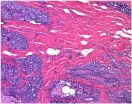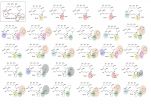INFORMATION:
Francois Bethoux, from the Mellen Center for Multiple Sclerosis Treatment and Research at Cleveland Clinic, and Corey McDaniel, of Case Western Reserve, contributed to the study.
The study received support from the Eunice Kennedy Shriver National Institute of Child Health & Development (RO3HD060073) and National Institute of Nursing Research (K01NR012975).
CWRU nursing school develops how-to exercise pamphlet for people with MS
2014-12-10
(Press-News.org) Fatigue and pain, along with other symptoms, prevent many people with multiple sclerosis (MS) from exercising. But a new how-to guide for a home-based exercise program, tested by researchers at Case Western Reserve University's nursing school and the Lerner Research Institute at the Cleveland Clinic, offers a way for people with MS to stay more physically active.
The researchers developed a 24-week exercise program based on a series of pamphlets with varying levels of difficulty. The program helps inactive individuals start at a lower, shorter level of activity and gradually build to longer, more difficult exercise routines.
"The printed pamphlets have shown promise in helping people with multiple sclerosis engage in exercise and offset the disabling effects of multiple sclerosis," said Matthew Plow, assistant professor at Case Western Reserve's Frances Payne Bolton School of Nursing and an exercise trainer for people with MS.
MS is thought to be caused by an abnormal immune response that attacks the central nervous system. An estimated 2.3 million people worldwide suffer from MS symptoms, which can vary from person to person, according to the National Multiple Sclerosis Society.
Along with pain and fatigue, other symptoms of MS include numbness and tingling, weakness, dizziness, feelings of stiffness, vision problems and walking difficulties.
But physical activity (PA) may help counter the debilitating physical symptoms and delay cognitive impairment associated with the autoimmune disease.
Plow is lead investigator on a study that tested a home-based exercise program to help people maintain their ability to balance, walk and use their hands and arms.
A series of pamphlets is designed to meet the individual's starting exercise level and unique symptom profile. The program was adapted from a distance-learning intervention designed by one of the study's researchers, Bess Marcus, from the Department of Family and Preventative Medicine at the University of California at San Diego.
Marcus' work focused on increasing the motivation to exercise and taking people through the five stages of readiness to exercise and change behavior: pre-contemplation, contemplation, preparation, action and maintenance of an exercise program.
Researchers recruited 30 women with doctor-confirmed diagnoses of relapsing-remitting MS to test the new exercise program.
The women suffered similar symptoms of fatigue and pain and also lacked the time or motivation to use a gym or take exercise classes. Each received instructions for exercise to do at home or in the neighborhood to increase their physical activity.
Participants started with the pamphlet that matched their PA levels. The step-by-step instructions helped participants establish an exercise routine that consists of aerobics balance exercises and strength training.
Researchers called the participants every three weeks with questions about the women's PA habits and barriers that may have prevented them from exercising. The participants also were interviewed and underwent a physical assessment at 24 weeks to track changes.
Results from the pilot study indicate the program shows promise in improving physical function and reducing symptom severity.
According to Plow, the program was well received--even by some of the women who had shied away from workout facilities.
Their findings were reported in the Health Research Education and Clinical Rehabilitation articles: "A Formative evaluation of customized pamphlets to promote physical activity and symptom self-management in women with multiple sclerosis," and "Randomized controlled pilot study of customized pamphlets to promote physical activity and symptom self-management in women with multiple sclerosis."
ELSE PRESS RELEASES FROM THIS DATE:
'Smart windows' have potential to keep heat out and save energy
2014-12-10
Windows allow brilliant natural light to stream into homes and buildings. Along with light comes heat that, in warm weather, we often counter with energy-consuming air conditioning. Now scientists are developing a new kind of "smart window" that can block out heat when the outside temperatures rise. The advance, reported in ACS' journal Industrial & Engineering Chemistry Research, could one day help consumers better conserve energy on hot days and reduce electric bills.
Xuhong Guo, Kaimin Chen, Yanfeng Gao and colleagues explain that researchers are pursuing smart windows ...
Theory details how 'hot' monomers affect thin-film formation
2014-12-10
HOUSTON - (Dec. 10, 2014) - Like a baseball player sliding into third, a hot monomer skids in a straight line along a cold surface until it's safely among its fellow molecules.
This is not what usually happens when scientists assemble monomers to make thin films for next-generation electronics, but the details remained a puzzle until a team led by Rice University got involved. Monomers are organic molecules that, in this application, form clusters and eventually complete layers.
Researchers at Rice and the University of Maryland led by Rice theoretical physicist ...
New insight into cancer defense mechanism
2014-12-10
A Danish Research Team identified a molecular mechanism that ensures that when cells divide, the genomic material passes correctly to the resulting daughter cells:
"The process, known as chromosome segregation, is vitally important because incorrect passage of the genomic material makes cells prone to develop into cancer cells," says Jakob Nilsson, associate professor at the Novo Nordisk Foundation Center for Protein Research.
The new discovery depends on a protein called BubR1 which if mutated can cause cancer.
The results have just been published in the scientific ...
How long can Ebola live?
2014-12-10
The Ebola virus travels from person to person through direct contact with infected body fluids. But how long can the virus survive on glass surfaces or countertops? How long can it live in wastewater when liquid wastes from a patient end up in the sewage system? In an article published Dec. 9 in the journal Environmental Science & Technology Letters, Kyle Bibby of the University of Pittsburgh reviews the latest research to find answers to these questions.
He and his co-investigators didn't find many answers.
"The World Health Organization has been saying you can put ...
New study measures methane emissions from natural gas production and offers insights into two large sources
2014-12-10
A team of researchers from the Cockrell School of Engineering at The University of Texas at Austin and environmental testing firm URS reports that a small subset of natural gas wells are responsible for the majority of methane emissions from two major sources -- liquid unloadings and pneumatic controller equipment -- at natural gas production sites.
With natural gas production in the United States expected to continue to increase during the next few decades, there is a need for a better understanding of methane emissions during natural gas production. The study team ...
Study examines effects of family-friendly workplace policies
2014-12-10
A happy worker is a productive worker. That adage may be true, according to a new study from The University of Texas at Dallas.
Two UT Dallas public affairs researchers found that family-friendly policies are beneficial for increasing productivity of employees in public organizations, and the authors said the finding likely lends itself to job satisfaction and commitment.
The study, published in the Public Personnel Management, investigated the effects of family-friendly human resources policies in public organizations. Using the Korea Workplace Panel Survey data from ...
Students design workstations that accommodate groups and individual
2014-12-10
New school and office workspace designs created by a group of Penn State engineering students are intended to allow users to share space and materials while maintaining their own work areas -- a dual purpose the researchers say has been neglected.
The research began in 2010 as a class project, according to Joseph M. Mahoney, former Penn State graduate student, now assistant professor of mechanical engineering, Penn State, Berks. "There's a lot of interest from an ergonomics perspective and workplace efficiency perspective of designing workstations for single users," Mahoney ...
Ancient creature discovered in the depths of the Arctic Ocean
2014-12-10
In the depths of the Arctic Ocean, buried deep in the sediment, an ancient creature waited for over a million years to be discovered. Paul Valentich-Scott, from the Santa Barbara Museum of Natural History (California), and three scientists from the United States Geological Survey (USGS, Menlo Park, California), Charles L. Powell, Brian D. Edwards, and Thomas D. Lorenson were up to the challenge. Each with different expertise, they were able to collect, analyze, and identify a new genus and new species of bivalve mollusk.
The path to discovery is seldom simple or easy. ...
New breast cancer classification based on epigenetics
2014-12-10
Breast cancer is the most common in women. One in nine will suffer breast cancer over their lifetime. Progress in prevention and early detection, and the use of chemotherapy after surgery (adjuvant chemotherapy), have achieved significantly increase survival in this disease in the last ten years, but much remains to be done.
The identification of patients with high-risk breast cancer is key to knowing whether a patient will require only the removal of the tumor by surgery or whether if she will need additional chemotherapy to make sure the removal of breast cancer cells. ...
Analogues of a natural product are drug candidates against malaria
2014-12-10
Malaria is one of the most serious health problems worldwide, registering 200 million clinical cases and more than 600,000 attributable deaths per year, according to information from the World Health Organization in 2013. Given the emerging resistance to the standard treatment most widely used throughout the world, which is based on artemisinin and its analogs, there is a need for new antimalarial compounds.
In this regard, scientists headed by Lluís Ribas de Pouplana, ICREA researcher at the Institute for Research in Biomedicine (IRB Barcelona), report on a new ...




